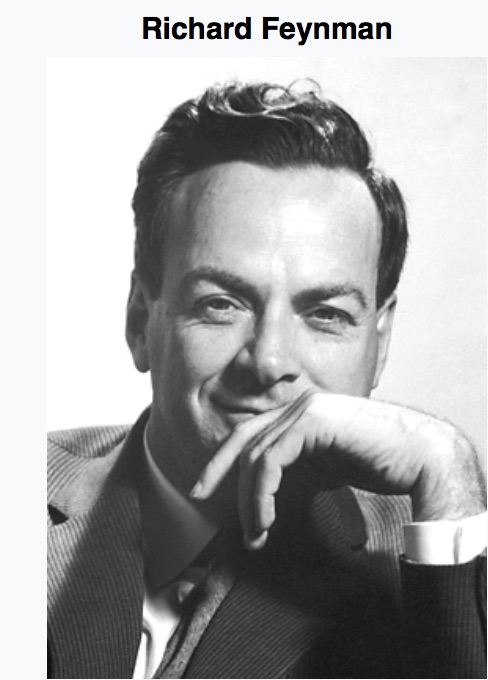
It’s true that Feynman never wrote a book before age 40. During his early career, he was immersed in the study of physics. At age 25, while working on the Manhattan Project at Los Alamos, he delivered a lecture titled Some Interesting Properties of Numbers to the world’s most distinguished physicists, who were gathered together in Los Alamos to develop an atomic bomb. Among the ideas he discussed was Euler’s remarkable formula, e^iπ + 1 = 0 which he used to dazzle the physicists who were unaware of the “magic” of this equation. After World War II, he poured himself into research at Caltech and by the early 1960’s, he had published about 40 research papers dealing with quantum electrodynamics, statistical mechanics, and superfluidity. Feynman developed a widely-used pictorial representation scheme for the mathematical expressions describing the behavior of subatomic particles, which later became known as Feynman diagrams.
However, as he entered middle age, Feynman began publishing books–several that became classics for those interested in physics. One of his first books, titled The Feynman Lectures on Physics, is a collection of lectures that he delivered at Caltech in the early 1960s. They deal with the main branches of physics including mechanics, electromagnetic theory, thermodynamics and quantum physics.
Around the same time, he published under the title The Character of Physical Law, a series of public lectures that he delivered at Cornell University. In this series, he explained how we use mathematics to capture the laws of physics as a means of understanding natural phenomena. In 1965 he received jointly with Julian Schwinger and Shin’ichirō Tomonaga the Nobel Prize in Physics.
Throughout middle age, Richard Feynman continued to deliver lectures that were gathered together and published as books discussing physics from a philosophical perspective and targeting a more general audience. In the mid 1980s, QED: The Strange Theory of Light and Matter, presents for the lay reader the quantum properties of matter and the “weirdness of quantum phenomena.” This was followed by books such as, Six Easy Pieces: Essentials of Physics Explained by Its Most Brilliant Teacher and Six Not-So-Easy Pieces: Einstein’s Relativity, Symmetry, and Space-Time.
As Feynman moved into his final years, his health was failing and his friend Ralph Leighton published two books relating stories told to him by Richard Feynman. These popular best-selling books titled Surely You’re Joking , Mr. Feynman! and What do you Care what other People Think? are attributed to Feynman as author, though Feynman never wrote them himself. Other similar books were published posthumously in Feynman’s name.
So, we can say that Feynman didn’t actually sit down to write a book in the literal sense, but he wrote lectures and told stories that were compiled into books that contain content that came almost exclusively from him. As Feynman would assert, there are two sides to every story, unless it’s written on a Möbius strip.
